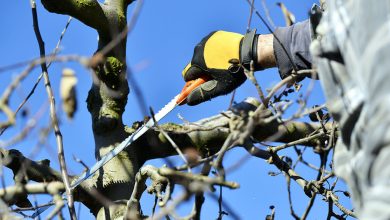Honeysuckle Cuttings: [Grafts, Time, Rooting and Planting]
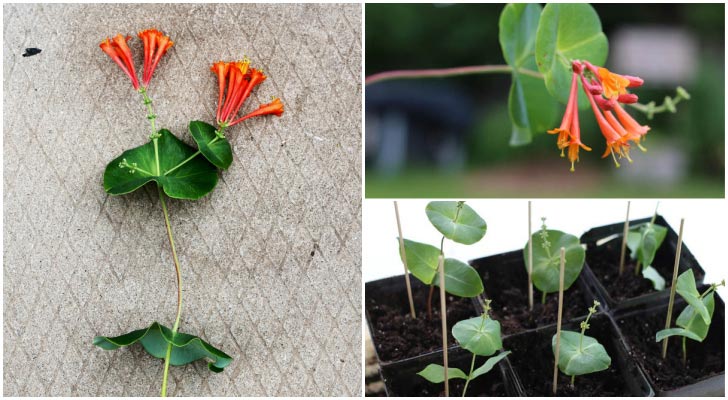
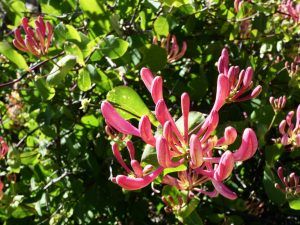 Honeysuckle is a climbing type plant that has become a favorite of many for the beauty of the flowers it produces.
Honeysuckle is a climbing type plant that has become a favorite of many for the beauty of the flowers it produces.
The flowers are also accompanied by an exquisite aroma that perfectly sets any space where it is established.
It accepts well the reproduction by seeds, by layering or by cuttings, the latter being the best alternative when faster results are needed.
Do you want to enjoy this species that is so pleasant, resistant and with few demands? Keep reading so you have all the information.
With what other plants or trees can we graft the honeysuckle cutting?
The grafting of honeysuckle with other shrubby species is uncommon due to its climbing plant conditions. In some cases it is advisable to experiment first with young plants specially treated for that purpose, before taking the risk with an already developed species.
A good plan could be to graft a honeysuckle cutting into galan de noche.
What is the best time to plant honeysuckle cuttings?
The best time to take honeysuckle cuttings is in the summer, after the annual pruning.Although it is a plant that does not grow very tall, it can spread quite a bit to the sides, so it is worth keeping it under control.
And it is just at this point, after it has bloomed, that it is convenient to remove some branches to cut.
How to get honeysuckle cuttings to root properly?
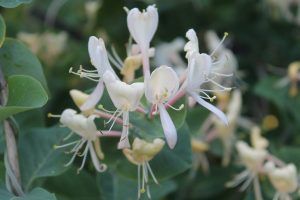 The first step will be to take some appropriate cuttings from a plant that has excellent health conditions.
The first step will be to take some appropriate cuttings from a plant that has excellent health conditions.
Honeysuckle thrives well on cutting, but it will do much better if we help it with a bit of rooting powder.
This will be placed at the base where the cutting of the mother plant was cut and it is necessary to remove the excess before moving to the ground.When using the method of leaving the cutting in water, it is not necessary to apply rooting agent.
It will only be necessary to give it time to develop its roots and then transfer it to a pot, as we will explain below.You have to choose a pot of the right size to allow its root system to develop well, which is quite strong and demanding in terms of space.
In this case, the substrate requirements are not very determining, so using a universal substrate is more than enough.You have to open a hole with the help of a stick or pencil so as not to cause damage to the cutting due to pressure.
If you are going to use a cutting that has already produced roots in water, much more care must be taken to avoid mistreating them.Immediately introduce the cutting and use your fingers to press a little soil around it, so that the branch is firm.
An important fact is that it must be ensured that it does not dry out. Therefore, a good dose of irrigation must be applied as soon as the cutting is finished planting.Afterwards, this procedure should be repeated every 3 or 4 days, especially if the outside temperature is very high.
How should we take the honeysuckle cuttings to plant them?
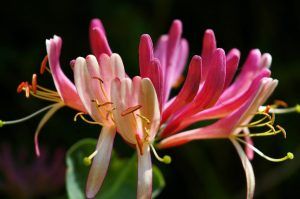 Honeysuckle cuttings should be taken from a mother plant that has good growth and flowering conditions.
Honeysuckle cuttings should be taken from a mother plant that has good growth and flowering conditions.
It is important to note this point because planting by cutting does not generate genetic variation, which means that the new plant will be identical to its mother.
The texture must be semi-woody, with an approximate length of 40 centimeters . If it is a branch that did not produce flowering, the better.
How long should we leave honeysuckle cuttings in water?
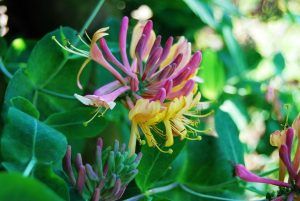 Some species of honeysuckle accept being submerged in water and, in it, they produce roots.It is a simple procedure that allows faster control of the development of the root system.
Some species of honeysuckle accept being submerged in water and, in it, they produce roots.It is a simple procedure that allows faster control of the development of the root system.
When this already exists, it will only be necessary to pass the cutting to the ground so that it continues with its expansion.
Is it convenient to use fertilizer or compost?
In the first instance, the honeysuckle does not need any fertilizer to prosper.When time passes and the desire is to have an abundant flowering and good characteristics, the right step is to use fertilizers for flowering plants.
How long does it usually take for a honeysuckle cutting to come out?
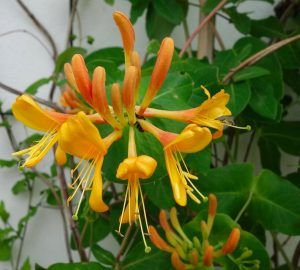 A honeysuckle cutting will be able to produce roots in an average time of 1 month.
A honeysuckle cutting will be able to produce roots in an average time of 1 month.
It is important to be very attentive to this change because the roots of this species are very strong and need space to establish themselves.
Therefore, transplanting is a basic and urgent action if you want to enjoy a healthy plant in optimal conditions.
It is best to plant directly in the garden or use a large pot to make it very comfortable. And that’s it, you’ll have to wait for it to grow (which is very fast) to enjoy all its advantages.

![Photo of Oregano Cuttings: [Grafts, Time, Rooting and Planting]](https://www.complete-gardening.com/wp-content/uploads/2022/08/oregano-cuttings-grafts-time-rooting-and-planting-390x220.jpg)

